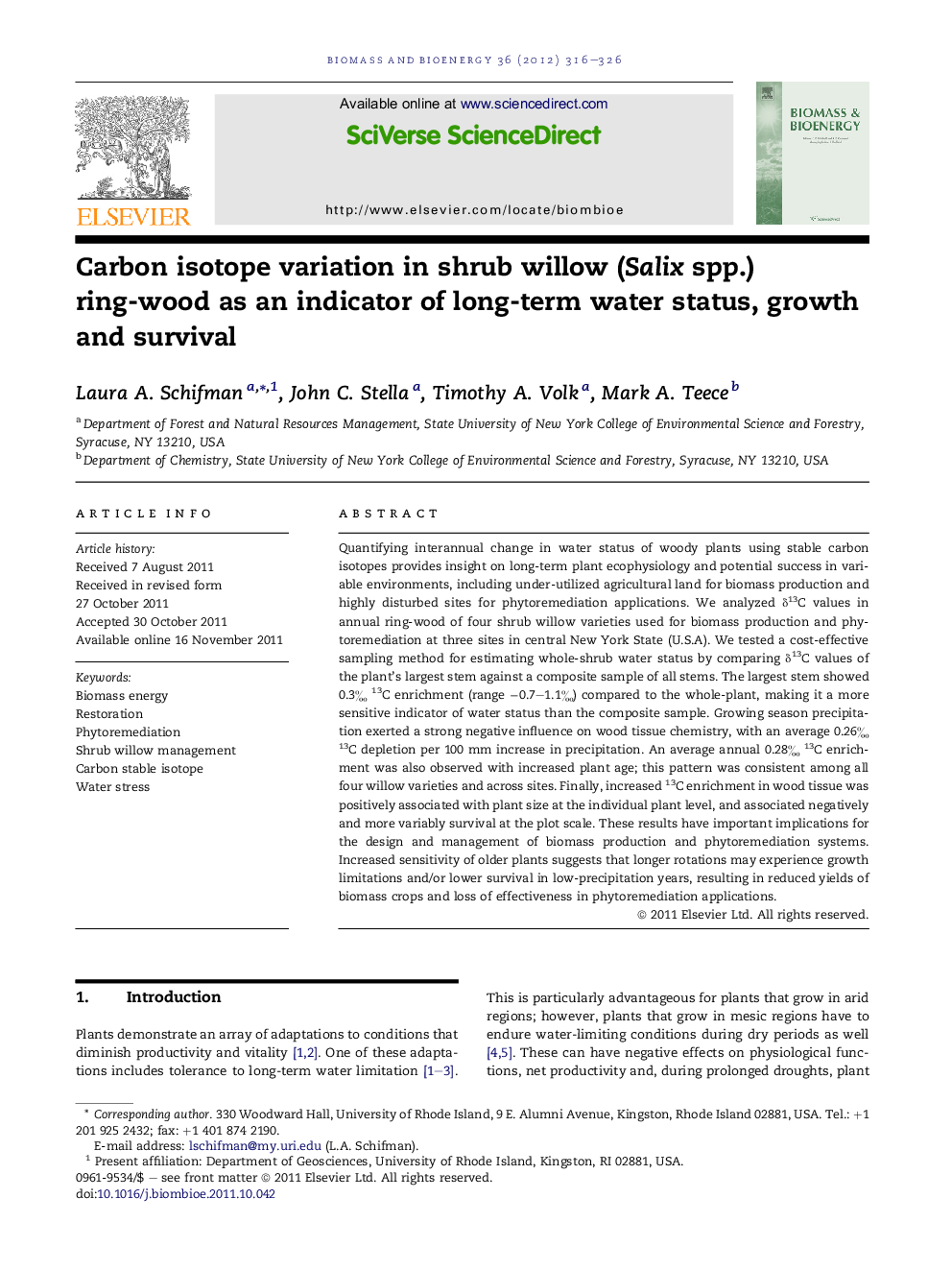| کد مقاله | کد نشریه | سال انتشار | مقاله انگلیسی | نسخه تمام متن |
|---|---|---|---|---|
| 677570 | 1459857 | 2012 | 11 صفحه PDF | دانلود رایگان |

Quantifying interannual change in water status of woody plants using stable carbon isotopes provides insight on long-term plant ecophysiology and potential success in variable environments, including under-utilized agricultural land for biomass production and highly disturbed sites for phytoremediation applications. We analyzed δ13C values in annual ring-wood of four shrub willow varieties used for biomass production and phytoremediation at three sites in central New York State (U.S.A). We tested a cost-effective sampling method for estimating whole-shrub water status by comparing δ13C values of the plant’s largest stem against a composite sample of all stems. The largest stem showed 0.3‰ 13C enrichment (range −0.7–1.1‰) compared to the whole-plant, making it a more sensitive indicator of water status than the composite sample. Growing season precipitation exerted a strong negative influence on wood tissue chemistry, with an average 0.26‰ 13C depletion per 100 mm increase in precipitation. An average annual 0.28‰ 13C enrichment was also observed with increased plant age; this pattern was consistent among all four willow varieties and across sites. Finally, increased 13C enrichment in wood tissue was positively associated with plant size at the individual plant level, and associated negatively and more variably survival at the plot scale. These results have important implications for the design and management of biomass production and phytoremediation systems. Increased sensitivity of older plants suggests that longer rotations may experience growth limitations and/or lower survival in low-precipitation years, resulting in reduced yields of biomass crops and loss of effectiveness in phytoremediation applications.
► A 0.26‰ 13C depletion in wood tissue occurred per 100 mm increase in precipitation.
► There was an average 13C enrichment with plant age and size for all varieties.
► Greater 13C enrichment often lead to lower survival rates in plants.
► Shorter growth rotations maximize biomass yield and phytoremediation applications.
Journal: Biomass and Bioenergy - Volume 36, January 2012, Pages 316–326